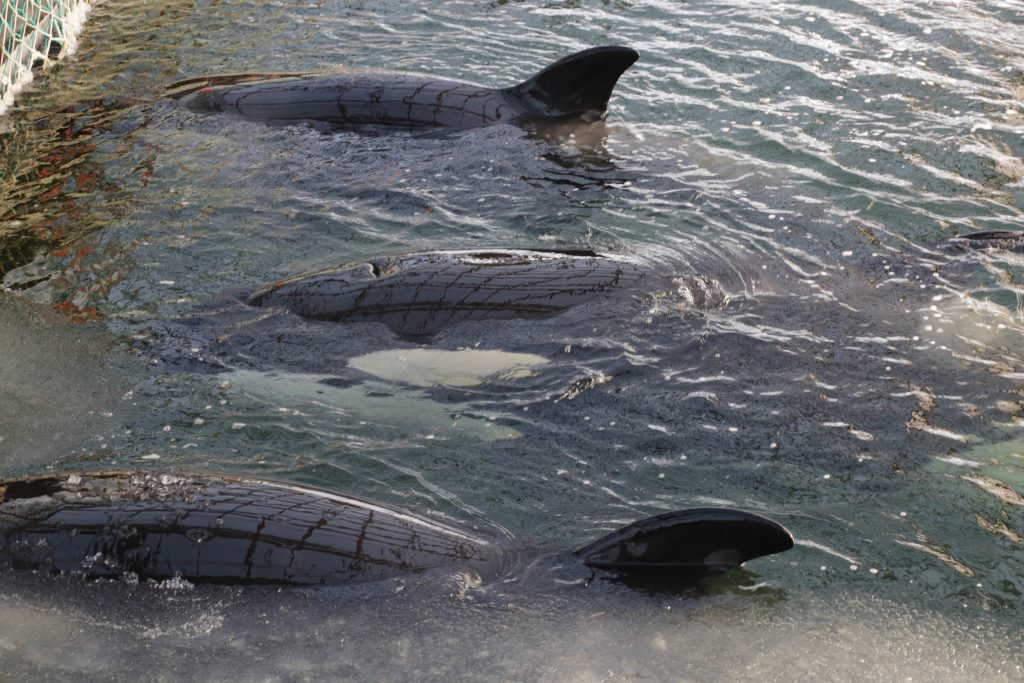
2021 is the 22nd year for the Far East Russia Orca Project (FEROP). Along with Alexander Burdin and Hal Sato, I co-founded the project in 1999 and have stayed on as co-Director. These days Olga Filatova and Tanya Ivkovich lead the field teams. I am pleased to say that the FEROP team has managed to visit the Russian Far East Pacific and Arctic waters every summer since 1999, including in last year’s pandemic summer, and in fact Olga and Tanya, along with Ivan Fedutin, and other team members are currently in the Kuril Islands, north of Japan, looking for killer whales.
What have we found out? As with many orca projects, we have based our work on photo-ID and recordings. We have now more than 2,000 individual photo-IDs of fish-eating killer whales, and about 150 photo-IDs of mammal-eaters. These are equivalent to resident and Bigg’s killer whales in the eastern North Pacific. We don’t have any “offshore orcas”. The dialect systems are comparable — of course with Russian accents. And Olga has led the writing of numerous papers based on her and the wider team’s recordings.
In 2020 FEROP had 47 working days at sea with 28 days with killer whales at 2 locations in SE Kamchatka. For the first time the group worked opposite the Kronotskiy Reserve at Chazma, 360 km north of the usual Avacha study location. New and rarely seen orcas were recorded and the team met the reserve director who introduced them to the governor of Kamchatka to discuss the problems of marine mammal conservation in Kamchatka. FEROP was asked to help develop official whale watching recommendations.
One big finding last year was meeting calves of four orca females in different families who hadn’t had calves for more than 10 years. Usually mature mothers give birth every five years. Analyzing the demography data, we found that the birth rates are very low with a lot of young calves dying between 2006-2016. In recent years, the birth rate has gone up a bit.
We also have increasing information based on feeding habit studies from drone observations and collecting fish scales after feeding events. It turns out that Russian fish-eating killer whales have a large variety of prey species in their diet, not just various species of salmon but also Atka mackerel and other fishes.
As in the past, we also include Baird’s beaked whale, humpback whales and North Pacific right whales, among others, when we see them and this has been part of the beauty of this FEROP work, that we’ve been able to spin off into studies of these other species, with individual FEROP members taking the lead and getting funding streams and papers as a result.
After the field season in 2020, there was a massive die-off of invertebrates along the coast of Avacha Gulf, Kamchatka. We don’t know about any effect yet on the resident orcas but we will find out this summer.
In other news, the Russian Prime Minister Mikhail Mishustin reported recently that the government will pass a new bill banning the “harvesting” of whales and dolphins. This is a result of several deaths (and global criticism may have contributed to the response) in the “whale jail” episode in Primorye Territory when 90+ belugas and 10 orcas were kept captive for many months, including over the harsh winter when their pens were filling with ice. Now the government has tightened requirements for catching for entertainment & educational purposes. More than 20 orcas were removed from mammal-eating groups in the Okhotsk Sea in recent years, so we’re hoping this has now ended.

